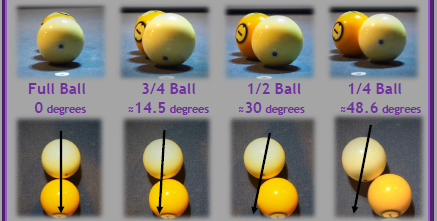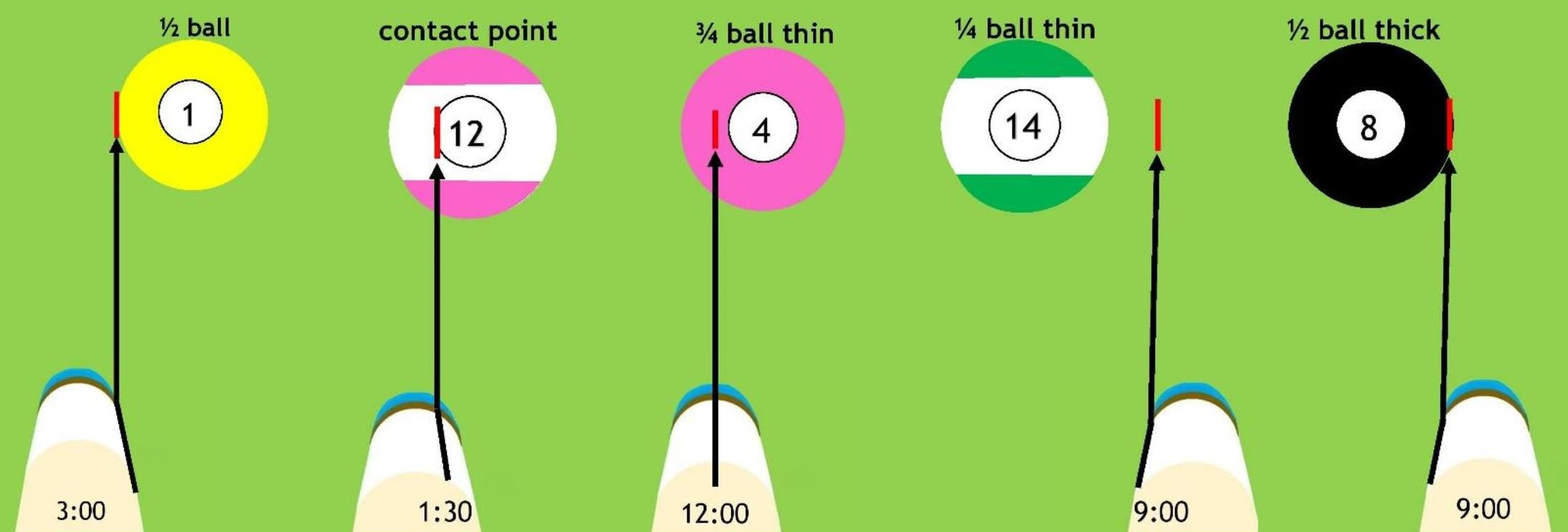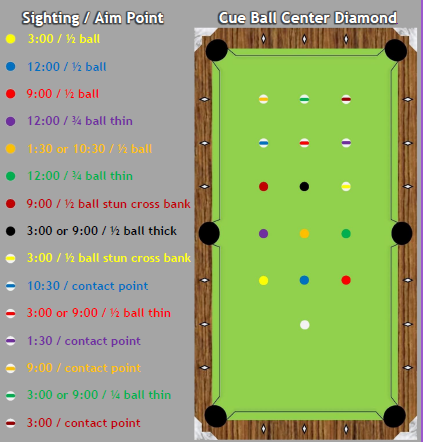Before you can utilize the Lucky Loser Basic Grid Drill effectively you will need to have some basic skills. Drills rely on your ability to be able to consistently deliver a cue ball to a target. If you have that then the training benefits will accelerate
.jpg)
Prerequisites
The first prerequisite is the skill to address the balls, and how to align your body to the lines of interest and aim. You need to be able to have an adequately developed stance to ensure consistency. You must understand what your vision center is, and have any significant flaws corrected. Possess a stable bridge. And finally, have a better than basic stroke developed. That means bridge placement an appropriate distance from the cue ball, flexible grasp on the butt, level cue without diversion from the horizontal or vertical planes, and follow through while staying in a fixed stance.
Additionally, you will need a basic understanding of ghost ball aiming, ball fraction aiming and sighted ferrule aiming. The Lucky Loser Composite Aiming System combines these. Below is provided a short outline of these, but I highly recommend you take a look at PoolDawg Academy's presentation for Sighted Ferrule Aiming.
You can read and view the PoolDawg Academy presentation for sighted Ferrule Aiming Sighted Ferrule Aiming in its entirety on our blog post.
Training Benefit
Intuitive Shot Sense
The ultimate benefit derived from using drills is the development of an intuitive shot making sense. Eventually you will gain the intuitive sense of multiple angles by redundant execution with use of good drills. This drill provides an important set of 20 common shot types. It is also the basis for further drills in the system.
Aim Improvement
Practice something and you will get better at it. Practicing this drill will improve your shot making ability, and success at winning games. Grid drills are based on the diamonds & pockets of a table. There are 45 grid positions on a table, including rail positions. It is valuable to understand what kind of aim and execution is required to make shots from grid positions. Both beginner and intermediate players often encounter shots during a match in which they are uncertain of where to aim. Doing grid drills provides a portfolio of reference shots which can be used to confirm the approximate accuracy during game play.
Aiming Systems
Ghost Ball Aiming
The first system is well known, and is called the “Ghost Ball” system. Once you find the spot on the object ball, the target, place an imaginary ball in contact with that point. Then the goal is to deliver the cue ball to the place where the ghost ball is. If you achieve that, the cue ball will strike the object ball at the desired target. Sounds simple, but it can be quite difficult. Firstly, you’ll be aiming at an imaginary target which often has no tangible elements in the vicinity to see.
.jpg)
Ball Fraction Aiming
This type of aiming has a few different names in the world of billiards: ball fraction, fractional aiming, and fractional ball, etc… As opposed to the ghost ball, using a ball fraction allows you to more easily see your aiming point. However, you do lose the sense of the contact point on the object ball to a degree
Ball fraction aiming divides the object ball into: ½ ball, ¼ ball, ¾ ball, and full ball. For a ½ ball hit aim at the very edge of the object ball. For a ¾ ball hit, aim midway from the center of the object ball and its very edge. The ¼ ball aim is the most difficult since you must aim at a point in space a ¼ ball outside of the object balls edge. A full ball hit is simply aiming at the center of the object ball.

Sighted Ferrule Aiming
A sighted ferrule refers to a mark or line on the ferrule. The line greatly reduces the visual estimation process of finding the center line. Without it, our subconscious incorporates other geometric aspects while aiming. To construct this simply use a straight edge and a pen to mark the ferrule. With today’s low deflection cues where on the ferrule you mark is not so important.
The sighted system utilizes an imaginary clock face on the tip/ferrule. e.g., When the sighting is rotated into the topmost center position you can see it directly as you aim down the shaft. This is called the 12 o’clock position. If you rotate the sighting to the right 90 degrees the sighting will then reside at the 3 o’clock position, and if to the left the 9 o’clock position. I submit only 5 positions on the clock are needed for training. From left to right these are: 9:00, 10:30, 12:00, 1:30, and 3:00.
The system works by rotating the sighting into its clock location depending upon what range on the equator of the object ball the aim point is. Then using the sighting as the aim line to the aim point. This design is for tips about 12.5-13.0 mm. Smaller sizes require adjustment.
.jpg)
Composite Aiming
The Lucky Loser Composite Aiming System combines ghost ball, sighted ferrule, and ball fraction aiming. The aim points show up as ¾ ball, ½ ball, ¼ ball, and contact point. The contact point is defined at the point where the ghost ball contacts the object ball. Incorporation of thin and thick adjustments fine tune some shots. The cue center always goes through the center of the cue ball.
Each of these systems have both sweet and sour spots, or ranges where the system/s work well, and where they don’t. This system incorporates the sweet spots, and leaves out the sour. Also, by combining the systems the sweet spots are multiplied to a degree great enough for me to have created this new aiming system authoritatively. All shots are without spin. Applying spin with composite aiming requires learning technique I instruct in a SPIN session. Below are a few diagrammatic examples of composite aiming:

Basic Grid Drill
This is a set of shots to give you a portfolio of 20 reference shots based on the diamond grid of a table, and the cue ball on the head spot. The illustration below shows all ball positions, but when running the drill set up just one ball at a time. Again, when a shot calls for aim by ferrule sighting take into account your tip diameter, and adjust slightly for smaller tips by aiming thin

Acknowledgements
Here is a short list of grateful acknowledgements for contributions regarding this presentation:
- PoolDawg Academy: for continual support of our cherished pool community with articles & videos by and for pool players.
- Talon AI: for allowing use of the instant replay with ball trajectories function of the Playkii AI System for pool
- Christian Eiberger: for performing drill shots in the video on his 9’ Diamond table with pro cut pockets, and overhead perimeter lighting.
- Daria Grin: for direction and videography.
.png)